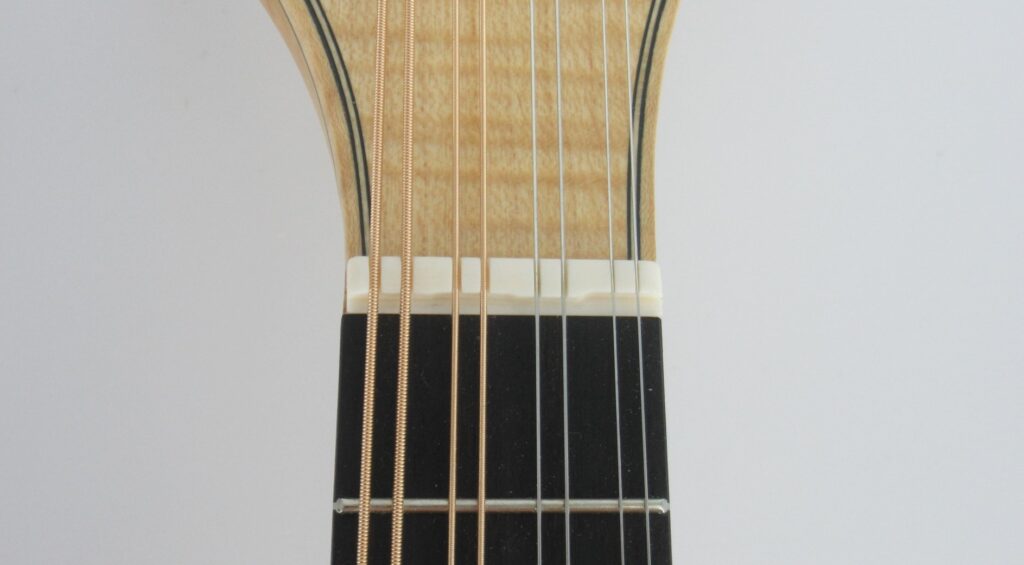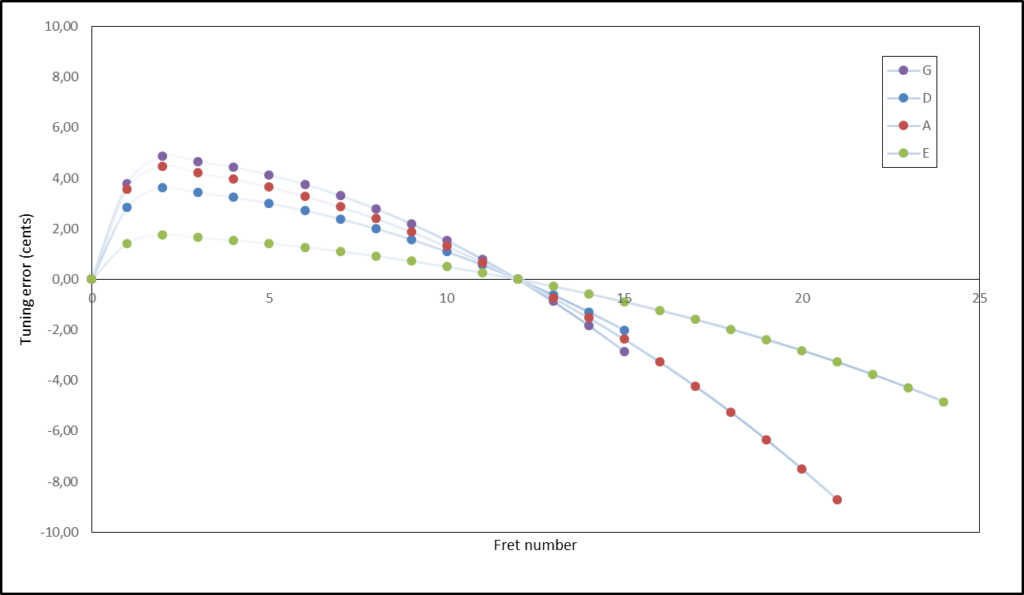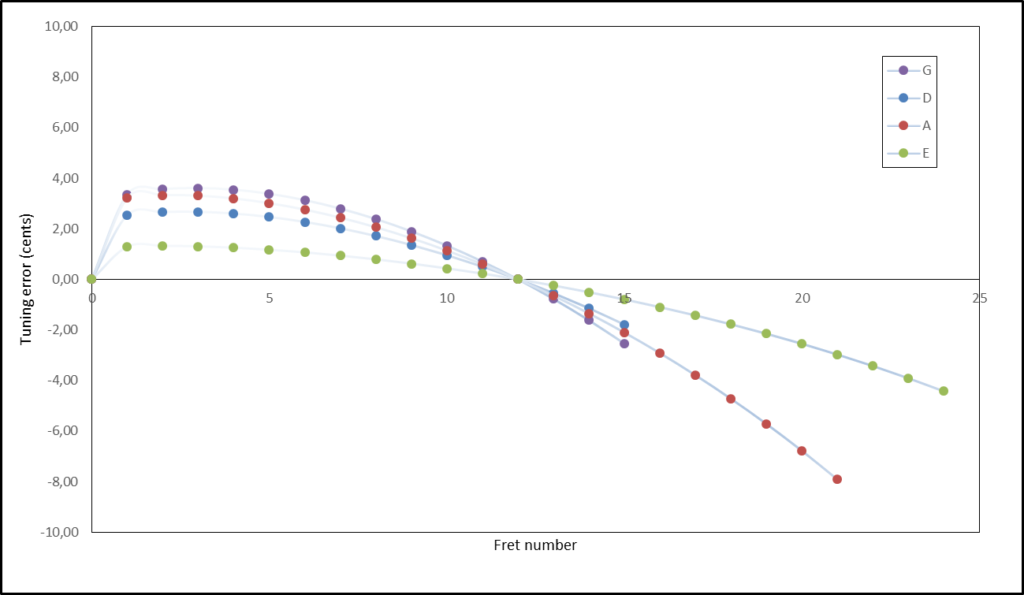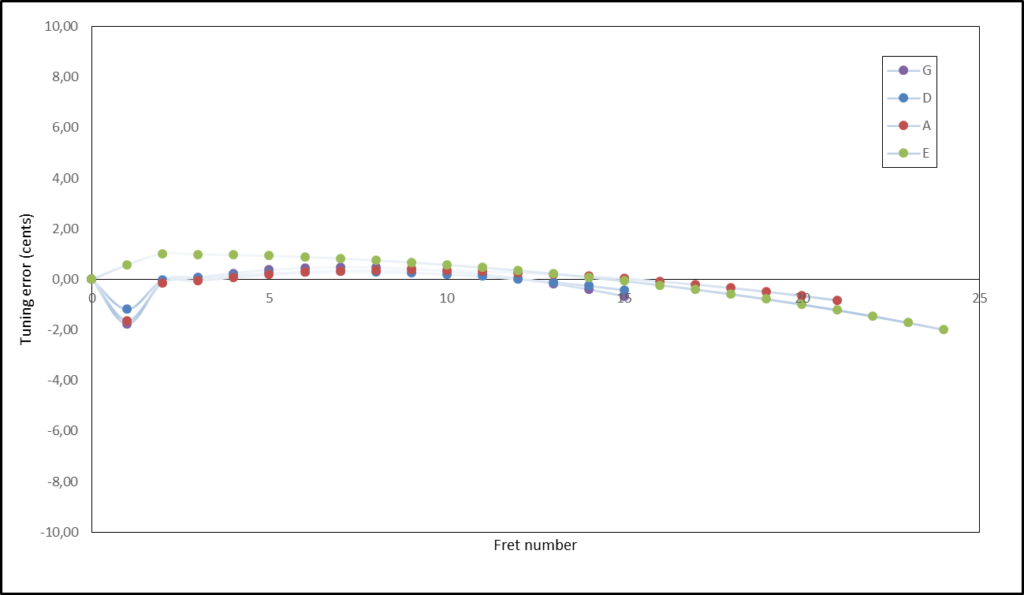Compensated nut
Why a compensated nut?
Often in stringed instruments, the notes of the first frets are slightly sharp and can cause annoying dissonances and beats, especially when playing chords.
If you don’t believe it, try to measure the notes yourself with a tuner: even if the open string is perfectly in tune, it is likely that, when pressed on the first frets, it is slightly (or sometimes very) out of tune. This effect is notable also on those instrument where the “regular” compensation (that performed on the bridge, allowing the string fretted at 12th fret to sound perfectly in tune) is working perfectly.
This annoying fact is a consequence of string physics and is typical of both instruments with a standard nut and those with “zero fret”.
The only way to avoid it is to use a compensate nut that has a shape designed to minimize intonation errors. Toghether with bridge compensation, it allows to achieve a perfect intonation over the whole fretboard.

A compensated nut on my F-Jazz mandolin.
Unlike standard nuts, on a compensated nut, each string (or each pair of strings in the case of mandolins) has a different “starting point”.
In the following figures, you can see the difference between a standard nut, a “zero fret” and a compensated nut on a mandolin.
In the graphs, each dot represents the intonation error expressed in cents of the four strings (each one identified by a different color) for each fret. you can read the fret number on the x axis.
Standard nut

Zero fret
A zero fret allows to have zero clearance and slightly enhances the tuning on the first frets but, overall, the situation is very similar to that of a regular, well executed, standard nut.

Compensated nut
